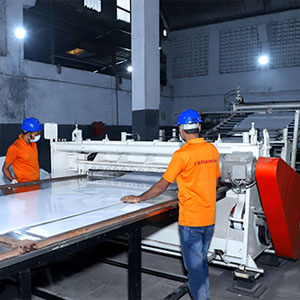ESD MATERIALS
Electrostatic discharge materials (ESD materials)
Electrostatic discharge materials (ESD materials) are plastics that reduce static electricity to protect electrostatic-sensitive devices (ESD) or contain flammable liquids or gases.
Materials
| Ohms Per Square | Material | Description |
|---|---|---|
| 103 to 105e | Conductive | No initial charge. Provides path for charge to bleed off. Typically black color. |
| 105 to 109 | Dissipative | No or low initial charge. Prevents discharge to or from human contact |
| 109 to 1012 | Anti-Static | Initial charges are suppressed. |
| 1013 | Insulative | Insulators and Base Polymers. Not an ESD material |
Conductive
Conductive materials have a low electrical resistance, thus electrons flow easily across the surface or through these materials. Charges go to ground or to another conductive object that the material contacts.
Dissipative
Dissipative materials allow the charges to flow to ground more slowly in a more controlled manner than with conductive materials.
Anti-Static
Anti-static materials are generally referred to as any material which inhibits triboelectric charging. This kind of charging is the buildup of an electric charge by the rubbing or contact with another material.
Insulative
Insulative materials prevent or limit the flow of electrons across their surface or through their volume. Insulative materials have a high electrical resistance and are difficult to ground, thus are not ESD materials. Static charges remain in place on these materials for a very long time.
Width – 300mm to 150mm
Thickness – 200microns to 4000microns
Finish – plain
Contact
-
A/66 New Empire Industrial Estate Kondivita Road Near J.B Nagar Andheri East- Mumbai 400059
-
inquiry@gmpolyplast.cominquiry@gmpolyplast.com
-
+91 9152362432+91 9152362432
Latest News
Certificates

Company
-
About usAbout us
-
EventsEvents
-
InvestorsInvestors
-
Privacy PolicyPrivacy Policy
© Copyright 2025 by GM-Polyplast. All Rights Reserved.






